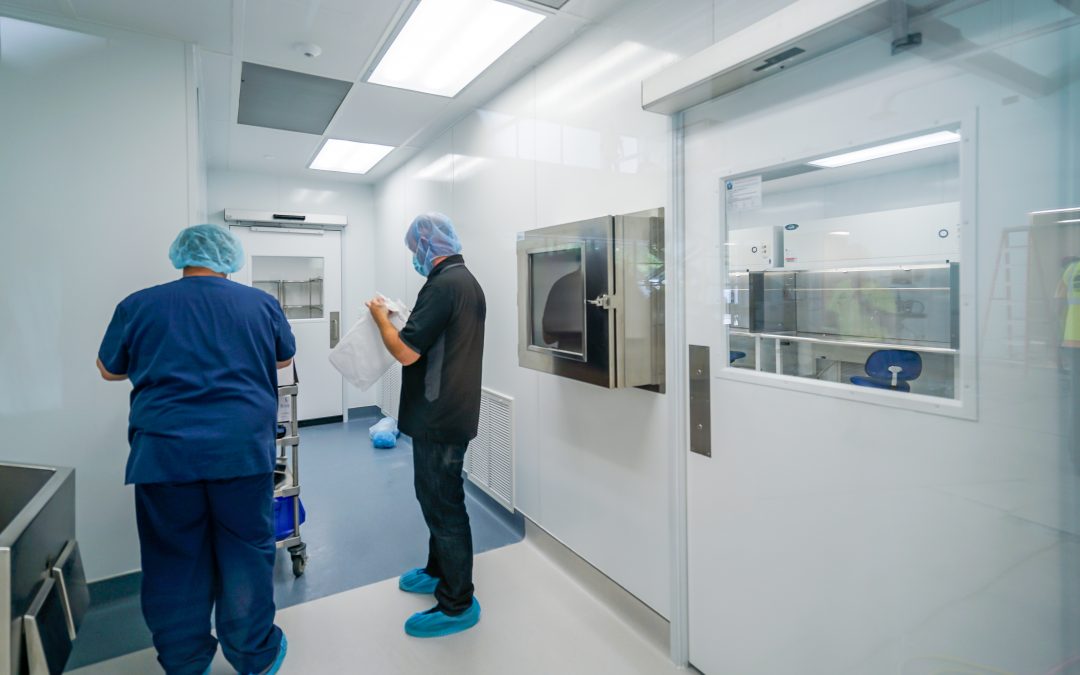Early in the cleanroom design process, all of the cleanroom terminology and jargon can be confusing, especially when designing a controlled environment is a complex process with many factors to take into account. Here’s an explainer on one of those terms, air showers, that may help you determine whether your cleanroom requires an air shower.
What are air showers?
Air showers are enclosed spaces that use high-velocity air jets to remove contaminants from people and items entering the controlled environment. They are placed at all entrances to the cleanroom and are connected to a HEPA or ULPA filtration system. Air showers can be used to prevent contaminants from entering the cleanroom, but they can also be used to remove contaminants from people and objects exiting a quarantine or other controlled environment to prevent cross contamination.
Air showers are particularly useful for cleanrooms requiring a high level of control, such as ISO Classes 1-5. Industries that commonly use air showers include pharmaceuticals, biotech, hospitals, aerospace, and semiconductor manufacturing.
Air Shower Specifics
All air showers function in the same way—air blows onto the person or object in the air shower, blowing loose contaminants off before the person or object enters the cleanroom space. The differences are really in size, materials, and filtration system.
Size
The size of your air shower will depend on what needs to pass through it. If only people will be passing through your air shower, then you won’t need a large one (depending on the number of people). However, if carts with product need to enter your cleanroom, your air shower will need to accommodate the person pushing the cart as well as the cart.
Materials
Air showers are generally constructed from either steel, aluminum, stainless steel, or plastics. The material used may depend on your budget as well as the application and requirements of the air shower.
Filtration system
Air showers can use HEPA (high-efficiency particulate air) filters or ULPA (ultra-low particulate air) filters, depending on your needs. HEPA filters remove particles greater than or equal to 0.3 µm with 99.99 percent efficiency; ULPA filters remove particles greater than or equal to 0.12 µm with 99.9995 percent efficiency.
Angstrom Technology designs cleanrooms that can incorporate a variety of design features, including air showers. Talk to an engineer today to get started designing your cleanroom.


